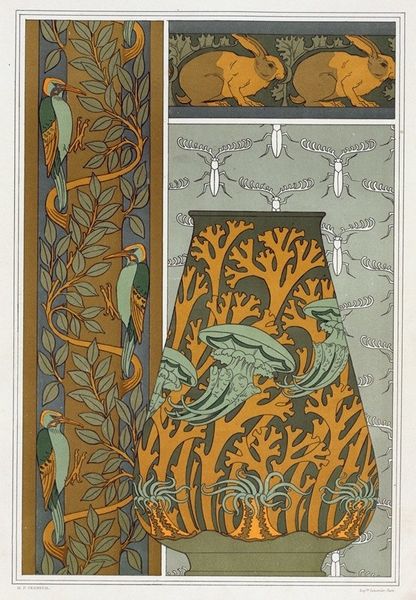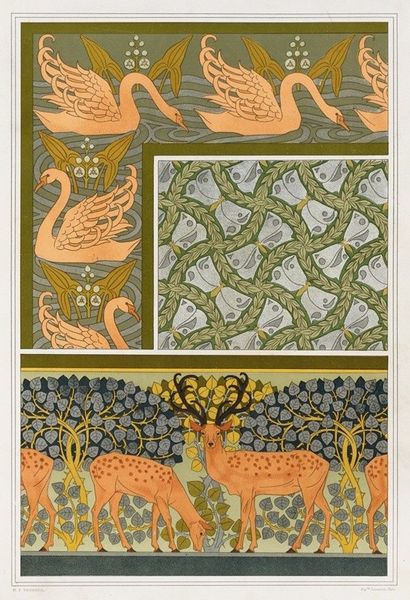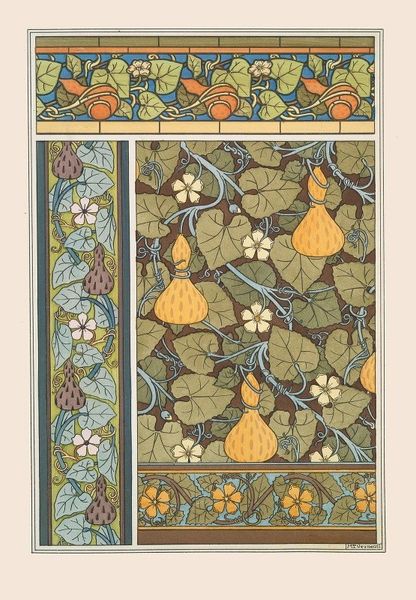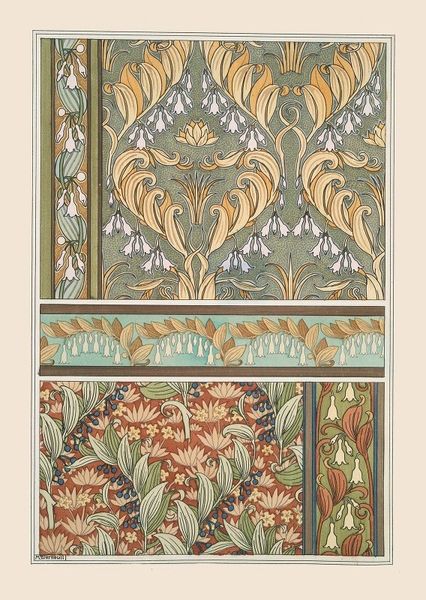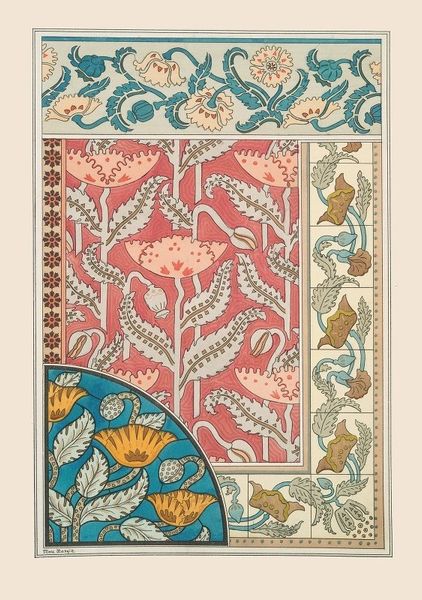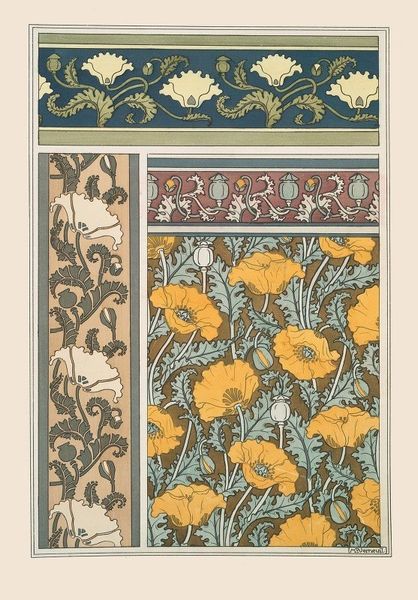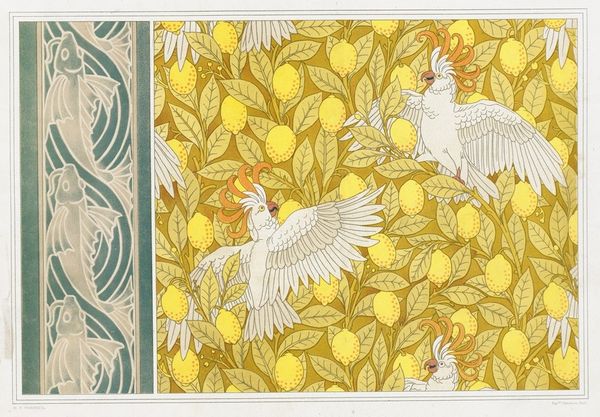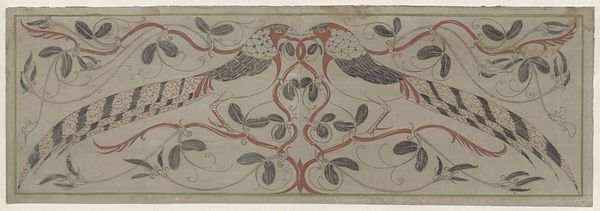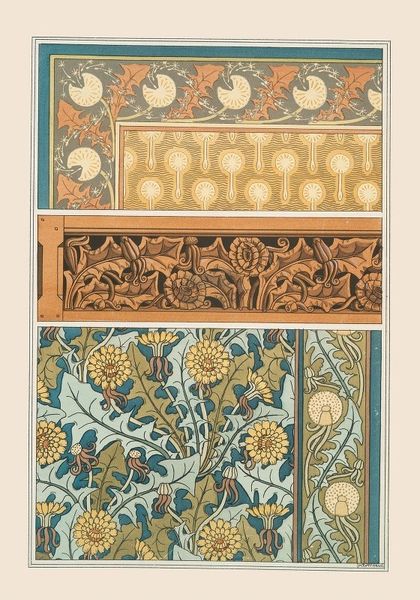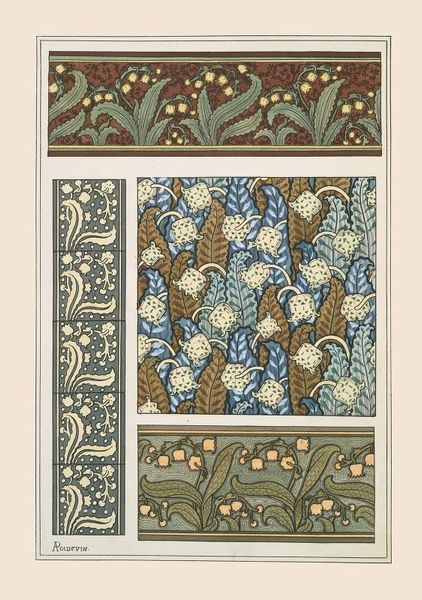
Poisson et algues, papier peint; pigeon et pavots, bordure de vitrail 1897
0:00
0:00
drawing, print
#
drawing
#
art-nouveau
# print
#
landscape
#
pattern background
#
handmade artwork painting
#
abstract pattern
#
naive art
#
decorative-art
Copyright: Public Domain: Artvee
Editor: Here we have “Poisson et algues, papier peint; pigeon et pavots, bordure de vitrail” a print made by Maurice Pillard Verneuil around 1897. It seems to combine patterns for wallpaper and stained glass borders. I find the contrasting scenes, one aquatic and one terrestrial, a bit jarring. What’s your take on this piece? Curator: This work truly exemplifies the Art Nouveau ethos, dissolving distinctions between fine art and applied arts. Look closely: the flattened perspective, the stylized natural forms. Verneuil's material choices speak volumes about the burgeoning decorative arts industry. The printmaking process allowed for mass production of these designs, bringing "art" into the everyday lives of a burgeoning middle class, wouldn't you agree? Editor: Definitely! So, you’re saying this isn’t just about aesthetics, but about how art became accessible to more people through printmaking? Curator: Precisely! We must consider the social context. Art Nouveau aimed to reject industrial ugliness with handcrafted beauty. However, printed wallpaper and stained glass, while decorative, are themselves products of industrial advancements. The irony is compelling, don't you think? The consumption of "nature" in a manufactured, readily available format, accessible for purchase. Editor: That makes me think about the actual labor involved, too. Like, who was producing these prints and for whom? Curator: Exactly! Investigating the printing houses, the artists employed, and the social class consuming these goods is crucial. Verneuil likely designed these patterns knowing they would be replicated and distributed widely, shaping the visual landscape of homes and businesses. It's a fascinating case study in materiality, consumption, and the social impact of art production. Editor: This gives me a new way of thinking about the purpose of decorative arts at the time. Thanks for the insight! Curator: My pleasure! It’s important to examine art through a lens that acknowledges production, labor and consumption.
Comments
No comments
Be the first to comment and join the conversation on the ultimate creative platform.
